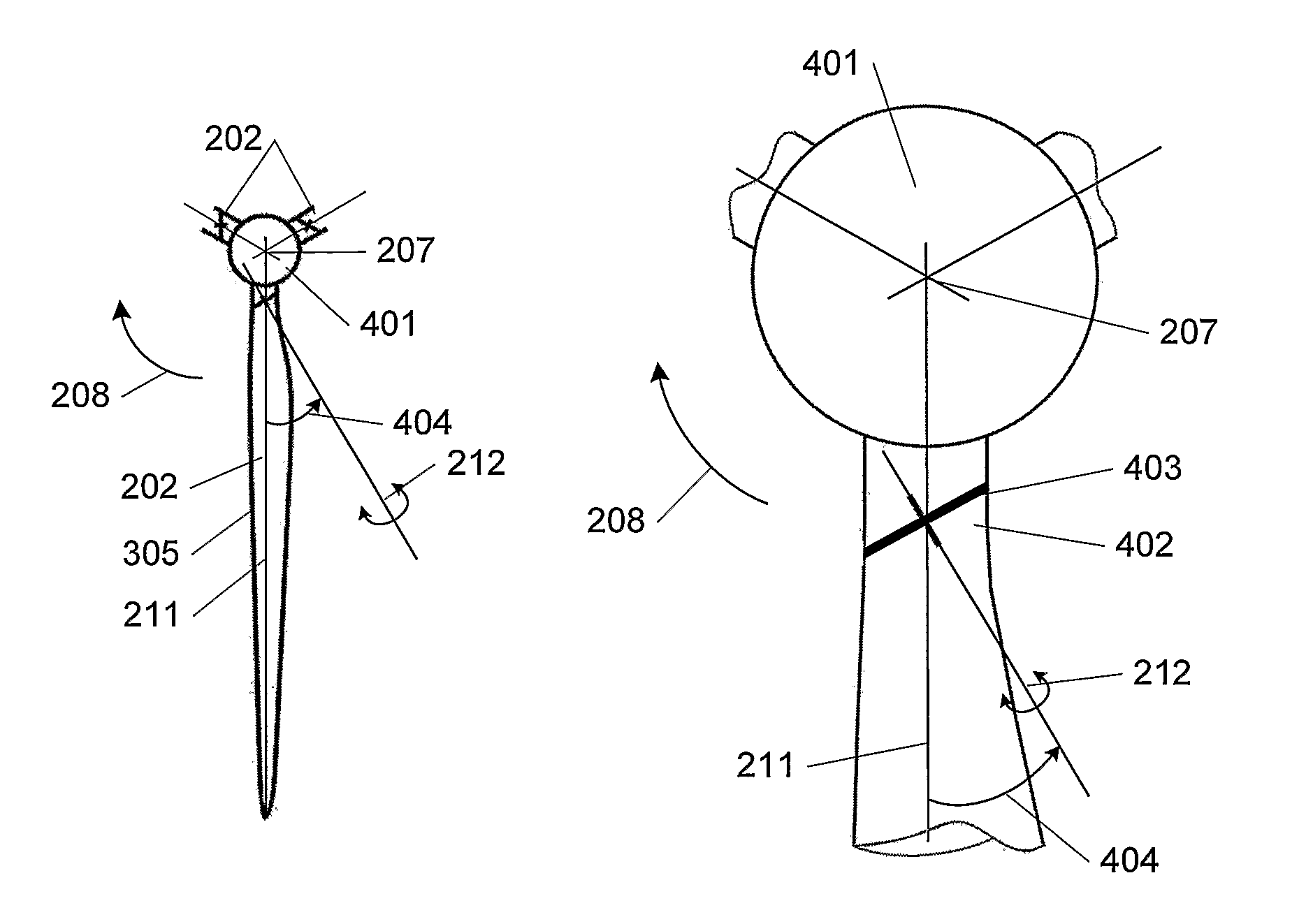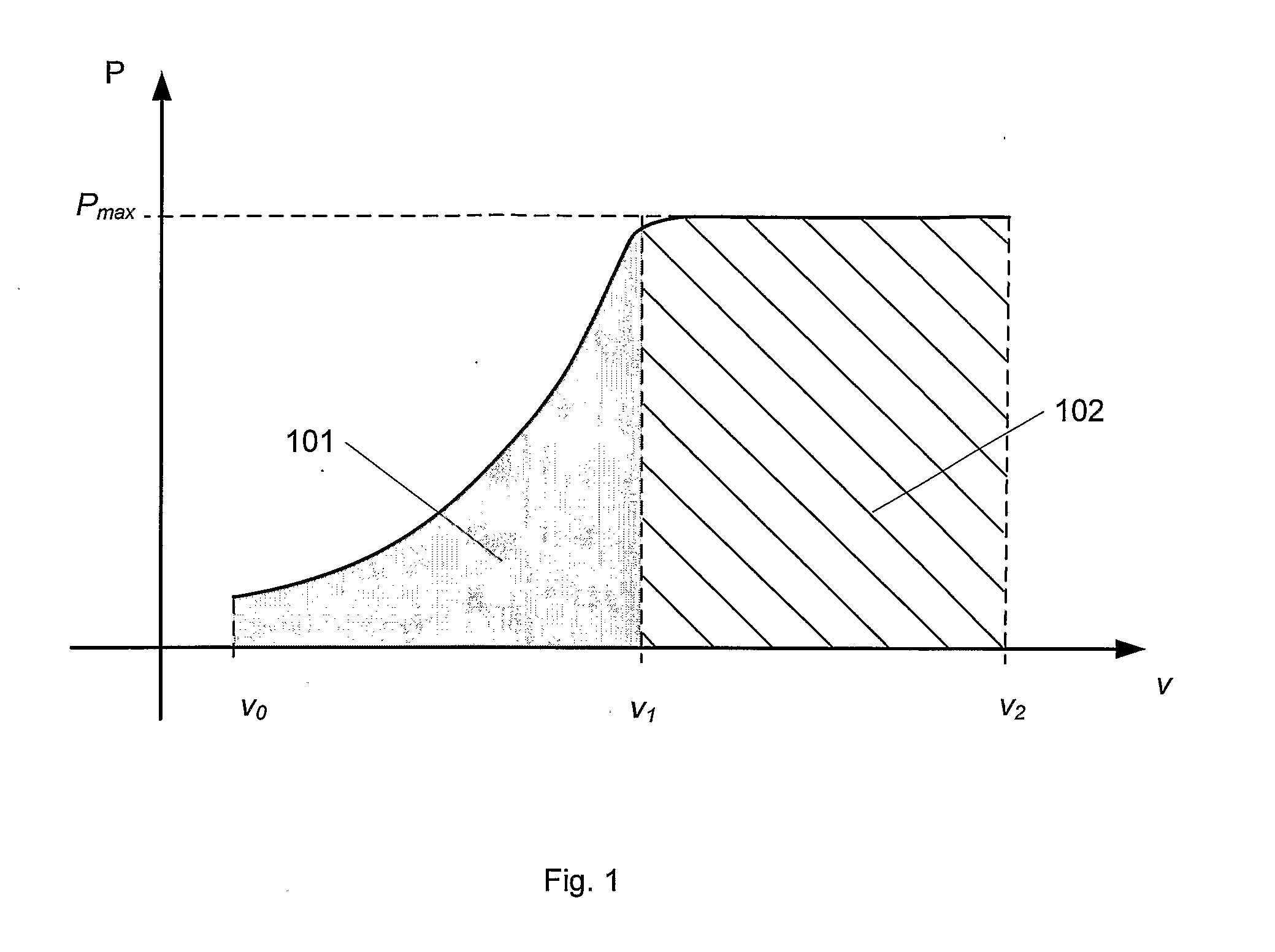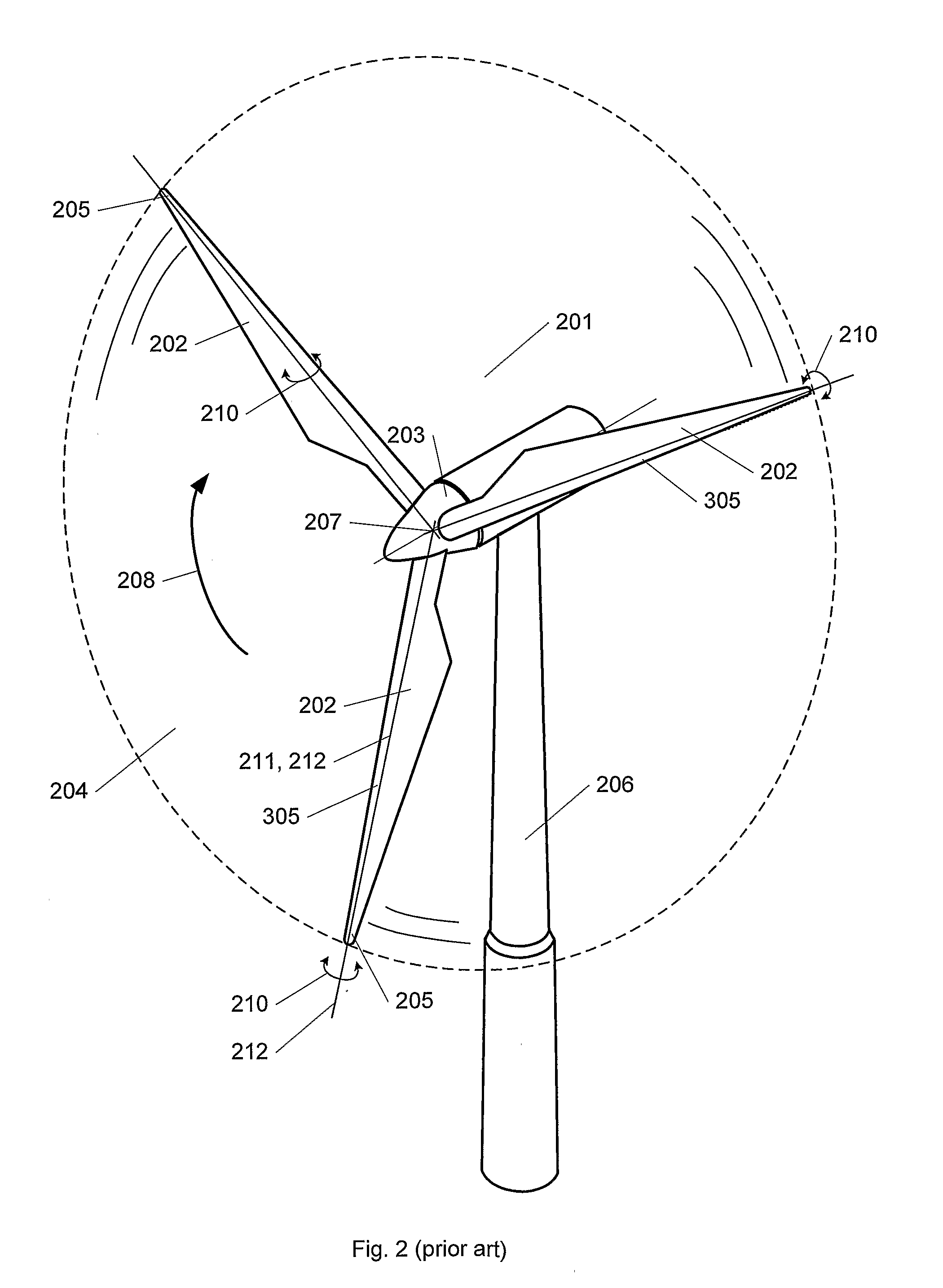Pitch of Blades on a Wind Power Plant
a technology of wind power plants and blades, which is applied in the direction of propellers, engine control parameters, water-acting propulsive elements, etc., can solve the problems of reducing the rotor area, undesirable reduction in the power yield, and the deformation of the blades is often a limiting dimensioning factor, so as to achieve the effect of optimizing the rotor area
- Summary
- Abstract
- Description
- Claims
- Application Information
AI Technical Summary
Benefits of technology
Problems solved by technology
Method used
Image
Examples
Embodiment Construction
[0037]FIG. 1 schematically shows a typical output curve for a wind power plant. The curve shows the achieved power P as a function of the wind velocity v. The wind power plant starts to produce current at a starting wind with velocity v0, where, in case of pitch-adjusted and actively stall-adjusted pitches, it often takes a pitch of 5° to start the rotor. Here and in the following, a positive pitch angle is defined by the leading edge of the blade profile being turned up into the wind, as also outlined more detailed in the following FIG. 3. From here, the power output increases with increasing wind velocities, until the velocity v1. Within this range 101, the wind power plant is constructed to maximize the power yield and productivity of the wind power plant. At the wind velocity v1, the wind power plant yields the maximum power Pmax. The magnitude of the velocity v1 depends on different factors, such as financial factors, including eg the size of the generator and local wind condit...
PUM
 Login to View More
Login to View More Abstract
Description
Claims
Application Information
 Login to View More
Login to View More - R&D
- Intellectual Property
- Life Sciences
- Materials
- Tech Scout
- Unparalleled Data Quality
- Higher Quality Content
- 60% Fewer Hallucinations
Browse by: Latest US Patents, China's latest patents, Technical Efficacy Thesaurus, Application Domain, Technology Topic, Popular Technical Reports.
© 2025 PatSnap. All rights reserved.Legal|Privacy policy|Modern Slavery Act Transparency Statement|Sitemap|About US| Contact US: help@patsnap.com



